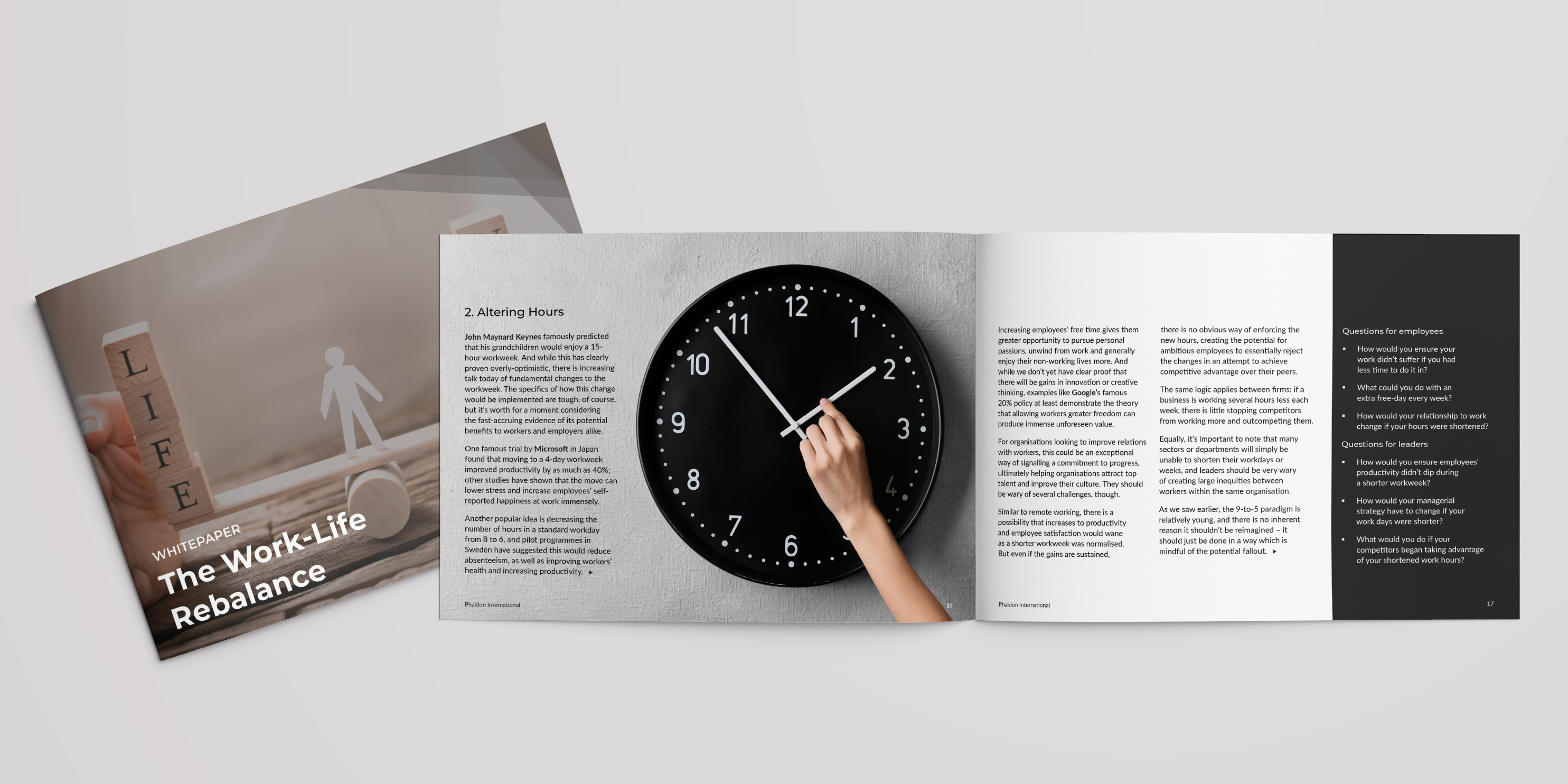Flexible working is increasingly presented as a solution to the challenge of work-life balance. But every component of the flexible working paradigm presents its own specific uses and challenges, and in this blog we’re going to delve into each of them.
Remote working
The global pandemic functioned as an experiment in remote working, providing the perfect opportunity to facilitate a future of greater flexibility. Much of this is about autonomy and freedom: commuters save hundreds of hours, and the increased flexibility allows parents and carers to fit their work around other commitments. Even those without such considerations may find remote working has the potential to create more free time for ‘life’.
From employers’ perspective, there is also much to recommend remote working: it lowers overheads and enables many organizations to radically downsize their office space. There is also strong evidence that remote working can increase productivity by 13% and help improve employee retention. However, LSE research has shown that when working from home is normalized, employees cease to see it as a benefit. For some, home working blurs the distinction between work and life, with increasing self-reported levels of stress for workers who actively rely on the symbolic separation between the office and home to police their behavior.
From a managerial point of view, holding workers to account remotely is a new skill they’ve had to develop; research from MindGym found that the average employee working remotely believes they can do over two hours less work without their boss noticing. There is also a concern that employees’ career trajectories will suffer without the physical proximity of the office, and that those who spend more time in the office will be more likely to gain promotions. Technological discrimination – against elderly people, or workers without the means to purchase high-quality equipment – will also need to be mitigated against, as will the general tendency to forget that less well remunerated employees may not have sufficient space to ‘work from home’.
Altering hours
John Maynard Keynes famously predicted that his grandchildren would enjoy a 15-hour workweek. While this has clearly proven overly optimistic, there is increasing talk today of fundamental changes to the workweek. With the 4-day workweek trials raging on in certain countries, the famous trial by Microsoft in Japan found that moving to a 4-day workweek improved productivity by as much as 40%; which is being used as a successful pilot to showcase lower stress and a boost in overall employee happiness. Another popular idea is decreasing the number of hours in a standard workday from 8-to-6, and programs in Sweden have suggested this would reduce absenteeism, as well as improving workers’ health and increasing productivity.
Increasing employees’ free time gives them greater opportunity to pursue personal passions, unwind from work, and generally enjoy their non-working lives more. While we don’t yet have clear proof that there will be gains in innovation or creative thinking, examples like Google’s famous 20% policy at least demonstrate that allowing workers greater freedom can produce immense unforeseen value. However, similar to remote working, there is a possibility that increases to productivity and employee satisfaction would wane as a shorter workweek was normalized. But even if the gains are sustained, there is no obvious way of enforcing the new hours, creating the potential for ambitious employees to essentially reject the changes in an attempt to achieve competitive advantage over their peers. The same logic applies between firms: if a business is working several hours less each week, there is little stopping competitors from working more and outcompeting them.
Rethinking vacation time
While many leaders are onboard with remote work and even decreasing the number of contracted hours, vacation is often a sticking point: how could organizations increase or alter their vacation policies without inevitably inviting a level of nonchalance into their workforce?
The current model of vacation is deeply unsatisfactory to many. According to the Institute of Management and Leadership, 61% of employees report feeling pressured to work while on holiday; a figure that rises to 65% when exclusively considering managers. The result is that many workers return from vacation more stressed which is a truly counterintuitive indictment of the current system. This creates a loop: over a quarter of employees have used annual leave to cope with workplace stress, but if the vacation time they take is unsatisfactory, many workers might end up falling further into stress, anxiety, and burnout.
A better approach would be to increase flexibility in vacation time where possible, but focus on ensuring that workers’ experience of the vacation time they do take is improved - by making plans to provide adequate cover and dissuading workers from feeling obligated to be in ‘work mode’ when they’re off the clock. And just as rethinking the workweek will signal progressive intentions, so too will a willingness to reimagine how holiday vacation time works.
For more insights, head over to Three models of work-life balance.
Check out our interview with Abigail Sawden, HR Lead for the US, on how work-life balance fosters a culture of compassion.
As a global talent partner, we are constantly on the pulse of evolving workplace patterns and its impact to talent management. Whether you’re a professional pursuing greener pastures or a client looking to secure talent, contact us today.







